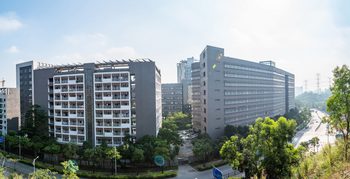All of China witnessed a record-breaking surge in stocked up products and demand for warehousing in China. What’s behind this?
- The continuous global shipping container shortage has disrupted the supply chains and reached an unprecedented level of disruption due to the most recent small-scale COVID outbreak in south China.
- Traders and shipping firms have been either suffering from lining up for shipping slots or availability at 5 – 10 times higher than the normal price.
- However, the global supply chain disruption wasn’t caused by the latest outbreak overnight in South China, but ripple effects from Pandemic, followed by more incidents such as the disruption by the March’s Suez Canal blockage and shipping companies taking boats out of service leading to less capacity.
- The unusual consolidation of temporary warehousing in China and LCL (less-than-container-load) have become the alternative solution for exporters to alleviate the container tightness, port congestion and extremely high shipping prices.
Want to gain the latest deeper insights and take preventions to reduce the supply chain costs? Here’s what you should know:
Shipping container demands exceed supplies caused by unexpected trade boom
· Trade boom stimulated by fiscal policies worldwide surged the container demands
Dating back to the early stages of the Pandemic, China was the first country that got hit the hardest economically when the virus was raging the country and started sweeping around the world. However, the unforeseen turning point around mid-year shocked the supply chains, gaining massive attention from businesses from all walks of life, including the governments.
According to Trading Economics, China experienced an unexpected international trade boom with a 32.2% surge in April 2021 and remained robust by a 27.9% YoY growth to US$ 263.92 billion in May, as estimated earlier last month.
As a matter of fact, made-in-China goods, such as electronics and household products, prove resilient to meet the high demand for immediate leisure and the norm of a work-from-home lifestyle.
Similar to the underestimated chip consumption in automotive sectors, the demand for electronics, work-from-home technology and household goods beat expectations.
Statistics show an export value of US$ 710.12 billion and US$ 109.39 billion in 2020, accounting for 27% and 4.2% by category respectively in Electrical, Electronic Equipment and Furniture, Lighting Signs, Prefabricated Buildings.
The rising outputs for the booming e-commerce have a lot to do with the fiscal and financial stimulus packages worldwide. Low interest rates and quantitative easing policies boosted the consumer spending, while the supplies couldn’t cope with the sudden demand due to several critical reasons, such as the shut-down of millions of manufacturers overnight, the hesitation of businesses and manufacturing capability expansion, and the returns of supply chains from India and Vietnam.
· The delays of vessels and unavailable empty containers further affect the shipping container shortage
What’s more, a large number of vessels and empty containers disappeared out of operations. Shipping companies taking boats out of service while the container freight index of China is already back on its pre-pandemic levels. Resulting in less capacity for a higher amount of export. Supply chains have started to face a significant shortage of shipping slots and containers ever since the exports began to increase rapidly.
As a result, shipping rates continue to soar as there’s a huge global demand for Chinese goods. Shipping rates are extremely high, and capacity is low. For companies, now every CBM of a container counts and is very valuable to make use of. The increase in demand for warehousing in China finds its origin here. A solution that is considered more often is to ship multiple production orders to a warehouse at one location in China and consolidate it into one shipment. In this way making use of every CBM of space in a container.
Alpha variant caused Yantian Port worsen the supply chain disruption
As one of the biggest ports in China with a cargo throughput of 1.46 million TEUs (September 2020, statistics from Shenzhen Customs), Yantian International Container Terminal, located in Shenzhen, the Greater China Area, was temporarily operating with restrictions to control the spread of Alpha variant cases from May 21st to June 24th.
The backlogs at Yantian have worsened the supply chain disruption with significant ripple effects, which could take several months to resolve.
Although the success in tackling the outbreak was seen, the world still needs to get more slots and available to take care of the delayed goods. Therefore, it seems that warehousing in China is a practical alternative to efficiently ship goods from China.
According to some insiders within the industry, advance reservation is still required to enter the port, and daily slots are still limited with a number of 9,000 in the need for COVID prevention. Expecting these events happening more often, inside information tells us how companies deal with these situations. “Some of our clients stored their goods at warehouses, waiting for the shipping slots and combine multiple products in one shipment. It took us two days to consign the goods for the available FCL shipment”, said one of the insiders on June 25th.
Before the Yantian crisis, exporters saw the emergence of this alternative warehousing services — consolidation of shipments by warehousing in China — to reduce the burden of the global shipping container shortage and supply chain disruption.
To reduce supply chain costs traders, tend to rent a local warehouse to store the goods until the shipping rates drop to an affordable range, or they arrange partial LCL shipments and combine them into FCL shipments in a warehouse in China.
Conclusion
Consequently, the constant crisis is expected to have many severe impacts on the global supply chains.
Specifically, the soaring shipping rates alone have put considerable pressure on the exporters. In other words, the end-consumers are the individuals who would need to bear the extra costs.
Key insights:
- Container tightness and port congestion could last for many months due to the acute container shortage and uncertain COVID situation.
- When the combination of warehouse and LCL shipments have become the norm, the warehousing demand will continue to be a solution until the shortage’s been resolved.
- Consumers will witness a significant retail price surge.
For more insightful news about warehousing services and supply chains in China, follow us and stay updated. If we can help your business with warehousing in China, please contact us.


